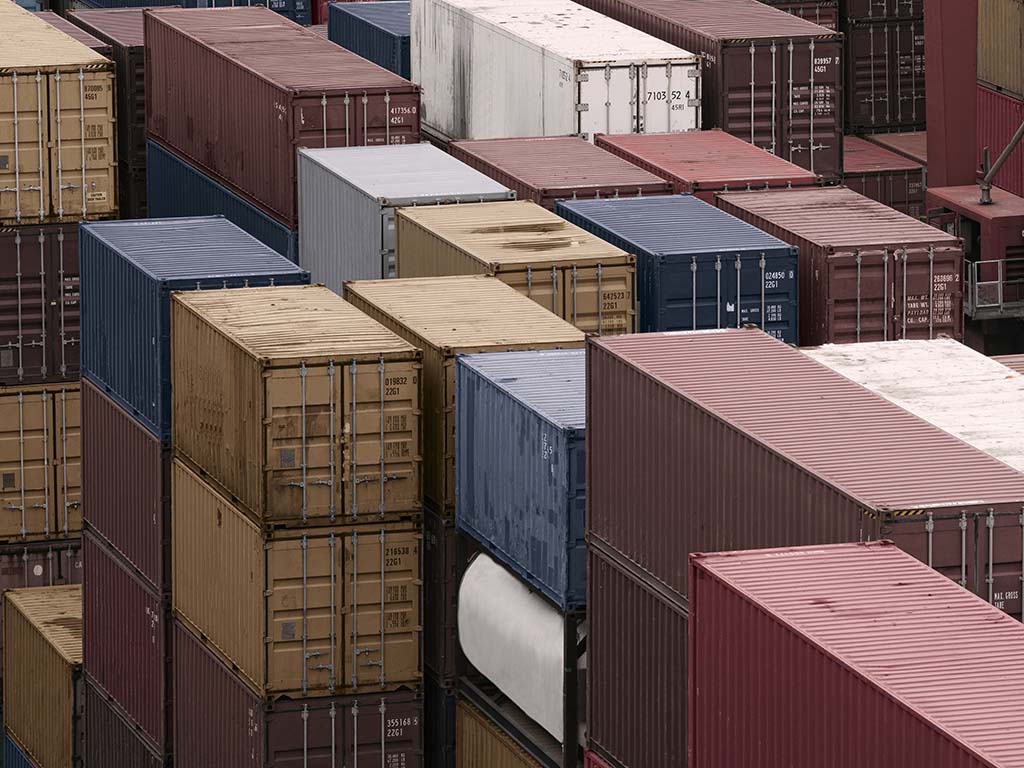How 2025 Economic Conditions and Trade Tensions Impact Main Street Businesses

Key takeaways
- New 2025 tariffs – including a 10% across-the-board import tax and a 145% tariff on Chinese goods – are sharply raising input costs for small businesses. Supply chain instability and uncertainty around U.S.–China trade policy are disrupting planning, pricing, and inventory management for Main Street firms.
- Operating costs are spiking: Over 60% of small businesses report rising expenses, while nearly one-third have raised prices to preserve margins.
- Labor conditions remain tight, even as hiring slows. Some businesses are laying off staff or freezing headcount while still struggling to fill key roles.
- Risk mitigation is essential: Businesses should proactively strengthen supply chains, reassess pricing power, and explore legal, financial, and operational “bulletproofing” strategies.
Main Street businesses – those with fewer than 500 employees whose owners run day-to-day operations – are feeling the squeeze from 2025’s challenging economic climate. The combination of rising inflation, increasing interest rates, and ongoing trade tensions seems to be generating a perfect storm for these small businesses.

I am a lawyer, a certified valuation analyst, and a certified exit and succession planner. I have worked with closely held business owners throughout my career. Contact me with questions about valuing your business, developing an exit plan, or the legal bulletproofing necessary to protect your investment.
These small and midsize firms are deeply entwined with global trade, accounting for over 41% of U.S. imports from China as of 2021. The result: ongoing tariff threats and the U.S.–China trade war are going to directly hit their bottom lines.
In 2025, a mix of newly threatened tariffs, lingering supply chain issues, and shifting consumer demand are fueling anxiety among small business owners.
Let’s take a look at how these policies may play out in the coming year and what strategy shifts the SME (small and medium enterprise) can consider to better bulletproof the business.
Recent 2025 Policy Developments Affecting SMEs
Escalating Tariff Measures
Trade tensions with China escalated in early 2025. The U.S. implemented sweeping new tariffs, including a 10% across-the-board import tariff on most countries and a staggering 145% tariff on all Chinese imports. These moves – part of a renewed trade offensive – represent a significant ramp-up of the trade war and have alarmed businesses reliant on imported goods.
Trade Policy Whiplash
The tariff policy has been in flux, with some duties imposed and later paused. For example, a set of “reciprocal” tariffs was announced and then put on a 90-day hold, even as the broad 10% and China-specific tariffs remained in effect.
The “on today/off tomorrow/back on in 90 days” tariff roller-coaster makes it more difficult for businesses to plan out their supply chain ordering and pricing, some business owners say Such uncertainty, as one owner noted, “only adds to destabilizing business operations” and even threatens the wider U.S. economy.
Widespread Concern
SME business advocates report high levels of worry over these trade policies. In a February 2025 Voice of Main Street survey, 53% of small-business owners said they are concerned that new tariffs will negatively impact their own business, and 77% are concerned about broader economic fallout from the trade conflict. Many entrepreneurs view tariffs as essentially an added tax on their operations, one that policymakers claim will help industry but that owners fear will hurt competitiveness and diminish profitability.
Rising Costs and Supply Chain Strains
One of the clearest impacts of the trade war on Main Street is rising input costs. Tariffs on imported materials and goods effectively increase the cost of those items, pressuring small firms that often operate on thin margins. Business owners and economists alike note that tariffs act like a direct cost increase that somebody must absorb – and smaller companies have limited cushion:
- Surging Operating Costs: A majority of small businesses are reporting higher expenses. In one recent survey, 62% of small firms said their operating costs rose in the past quarterOwners cite spikes in prices for inventory, raw materials, and shipping. Tariff hikes in particular have been described as an “overnight gutting of the profit profile of small businesses, forcing difficult choices to maintain profitability.
- Price Increases and Margin Squeeze: Many Main Street businesses have had to pass along some of these costs to customers. As of early 2025, a net 32% of small businesses reported raising their average selling prices – one of the highest rates on record. More price hikes are on the horizon (net 29% plan further increases, reflecting the intense cost pressure. Even so, small firms often cannot raise prices enough to fully cover tariff-related costs without losing customers. As a result, owners see profit margins shrinking. An economist notes that whenever costs spike, small businesses “will have to pass that cost to their customers,” which ultimately “decreases their competitiveness” relative to larger companies with more cushion.
- Supply Chain Disruptions: Tariffs and trade uncertainty are also disrupting supply chains for SMEs. Many small businesses rely on global suppliers for specialized products or affordable inventory. Now they face tough decisions: absorb the extra tariff costs, scramble for new suppliers, or drop certain product lines. For example, a Texas eco-friendly retailer that sources some goods from Canada reported in a recent news article that tariffs are directly “impacting our ability to purchase and price some items”, to the point that “they will be completely eliminated from our stores” if costs become prohibitive.
- Alternatives to China: Diversifying away from Chinese manufacturing isn’t easy for smaller companies. One entrepreneur who imports all her product components from China told Fox Business News that she spent years searching for U.S. manufacturers but “has never been able to find” a domestic producer that can meet her scale and cost needs.
- Even if she moved final assembly to the U.S., she notes she would still need to import materials from 14 other foreign suppliers to make her product. This illustrates the bind many SMEs are in – they cannot quickly “buy American” or shift to new countries without prohibitive cost, so they remain exposed to import tariffs. The result is often delayed shipments, hurried reengineering of supply chains, or increased inventory hoarding as firms try to navigate the trade turmoil.
Softening Demand and Business Sentiment
Beyond raising costs, the current economic conditions are also affecting customer demand and business optimism on Main Street. As inflation and tariffs drive prices up, consumers have become more price-sensitive, which in turn hits small business sales. Meanwhile, business owners’ confidence in the economy has deteriorated amid the uncertainty:
- Consumer Belt-Tightening: Many small businesses report that their customers are pulling back on spending or seeking cheaper alternatives. High prices and economic jitters have made consumers more frugal, especially for non-essentials. For instance, a Fort Worth apparel business that prides itself on sustainable, ethically made fashion saw its costs jump almost 37% overnight due to new tariffs. Its owner told the Dallas Morning News that even a smaller 10% across-the-board tariff will deal a financial hit. Meanwhile, her customers are “tightening their belts” and avoiding discretionary purchases like boutique clothing. As a result, demand is shifting toward cheaper “fast fashion” alternatives. This story is echoed across many Main Street shops and makers: when costs force them to raise prices, some customers defer or downgrade their purchases, denting small business revenues.
- Slower Sales for Many Small Firms: Data shows that a significant share of SMEs are experiencing stagnant or falling sales. A survey by the Small Business Majority found that over the past few months, 42% of small businesses saw their revenues decrease, while only 24% saw revenue growth in that period. In other words, more than two out of five small business owners are facing year-over-year declines in sales. This softening demand is partly due to customers pulling back in an uncertain economy and partly due to the businesses’ own pricing adjustments (some owners have opted to sell less or delay orders rather than raise prices too sharply).
- Deteriorating Optimism: With these headwinds, small business sentiment has turned distinctly pessimistic in 2025. The National Federation of Independent Businesses (FNIB) Small Business Optimism Index has been falling and recently dipped below its 51-year average. In fact, the net percentage of owners expecting the overall economy to improve plunged to –37% (meaning far more owners expect conditions to worsen than improve) This represented a 10-point drop in optimism in one month alone. Similarly, only 12% of owners say now is a good time to expand their business – a figure that dropped sharply and is near the lows last seen in the early pandemic lockdowns Uncertainty among small businesses is at record-high levels, driven by not only trade policy confusion but also lingering inflation and labor shortages. In short, many entrepreneurs are bracing for tougher times ahead.
- Rising Anxiety and Pessimism: Qualitative reports underscore the mood on Main Street: anxious and frustrated. “I’m so angry… I just sort of feel like I’m throwing things at the wall and hoping they stick,” said one Texas small-business owner told the Dallas Morning News after struggling to navigate the sudden tariff changes. Another said the past weeks have been “a nightmare” of trying to budget for uncertain costs – caught between possibly 10% or 37% tariffs that could kick in after 90 days. Such stories reflect a growing pessimism. Many small-business owners fear they’re at the mercy of geopolitics and macroeconomics far beyond their control. Most of these entrepreneurs rank the current tariff conflict as a top concern, even after enduring a pandemic and supply-chain chaos in recent years. In sum, confidence on Main Street has been shaken.W
Employment and Investment Decisions
With higher costs, uncertain sales, and an unpredictable policy environment, many Main Street businesses are cutting back hiring and investment plans. The data suggests small firms are cutting ew expenditures and, in some cases, eliminating staff or freezing hiring.
- Hiring Freezes and Layoffs: Unlike larger corporations, small businesses don’t have deep buffers and often must react quickly to revenue shortfalls or rising costs. Recent surveys indicate that more small businesses have been reducing headcount than adding. In late 2024 and early 2025, about 18% of small businesses reported laying off workers, while only 12% reported hiring new employees. This net contraction in employment is a stark reversal from the growth mindset many had a year prior. Some Main Street employers who expanded staffing during the post-pandemic recovery are now trimming back to control expenses. Additionally, many others have imposed hiring freezes, choosing not to fill open positions unless absolutely necessary. This pullback is one clear sign of pessimism, as business owners hunker down and try to ride out the uncertainty.
- Persistent Labor Challenges: Ironically, even as overall hiring slows, labor shortages remain an issue for small businesses in certain roles. As of February 2025, 38% of owners reported having job openings they could not fill – the highest share in over six months. Skilled trades and experienced technical positions are particularly hard to hire for. This labor crunch, which started during the pandemic recovery, continues to vex many small employers. Owners are caught in a bind. They are hesitant to expand payrolls given the economy, but may need more hard-to-find workers to meet demand or replace turnover. Existing may be asked to do more, and wage pressures persist (about one-third of small firms raised compensation recently to attract or retain workers.) In short, Main Street businesses face a dual challenge – an external pressure to cut costs (leading to fewer jobs overall) coupled with internal pressure to raise pay for certain key workers.
- Delayed Investments and Expansion: Uncertainty is also causing small businesses to scale back or delay capital investments. For example, a Dallas-area entrepreneur who had hoped to grow two eco-friendly startups admitted, “because of these tariffs and an anticipated ‘domino effect’ on other sectors of the U.S. economy, we’re rethinking our expansion and investment plans for 2025 and beyond.” This sentiment is common – companies that might have opened a new location, purchased new equipment, or launched a new product line are putting those plans on hold until conditions stabilize. Big expenditures are hard to justify when tariffs or regulations could change next quarter and when the cost of borrowing has risen (interest rates are at their highest in years, making business loans more expensive). Instead, owners are conserving cash and focusing on maintaining current operations. Notably, the NFIB reports that only 12% of small businesses think now is a good time to expand, and actual capital outlay plans have softened in recent months. The prevailing strategy is caution: postpone growth initiatives, avoid new debt, and wait for clearer signals on the economy.
Conclusion
In short, flare-up of the long-standing trade war with China and economic headwinds of 2025 are weighing heavily on America’s Main Street enterprises. Tariff threats are driving up costs, snarling supply chains, and forcing small businesses to raise prices or drop products – an existential challenge for firms with tight margins.
These increased costs and persistent supply disruptions are, in turn, dampening customer demand and confidence. Owners see their customers becoming more price-conscious and their sales trending flat or downward, which has eroded optimism to its lowest point in years.
Many small-business owners are responding by tightening their belts: cutting back on hiring, hunkering down on investments, and bracing for a potentially rough economic ride.






